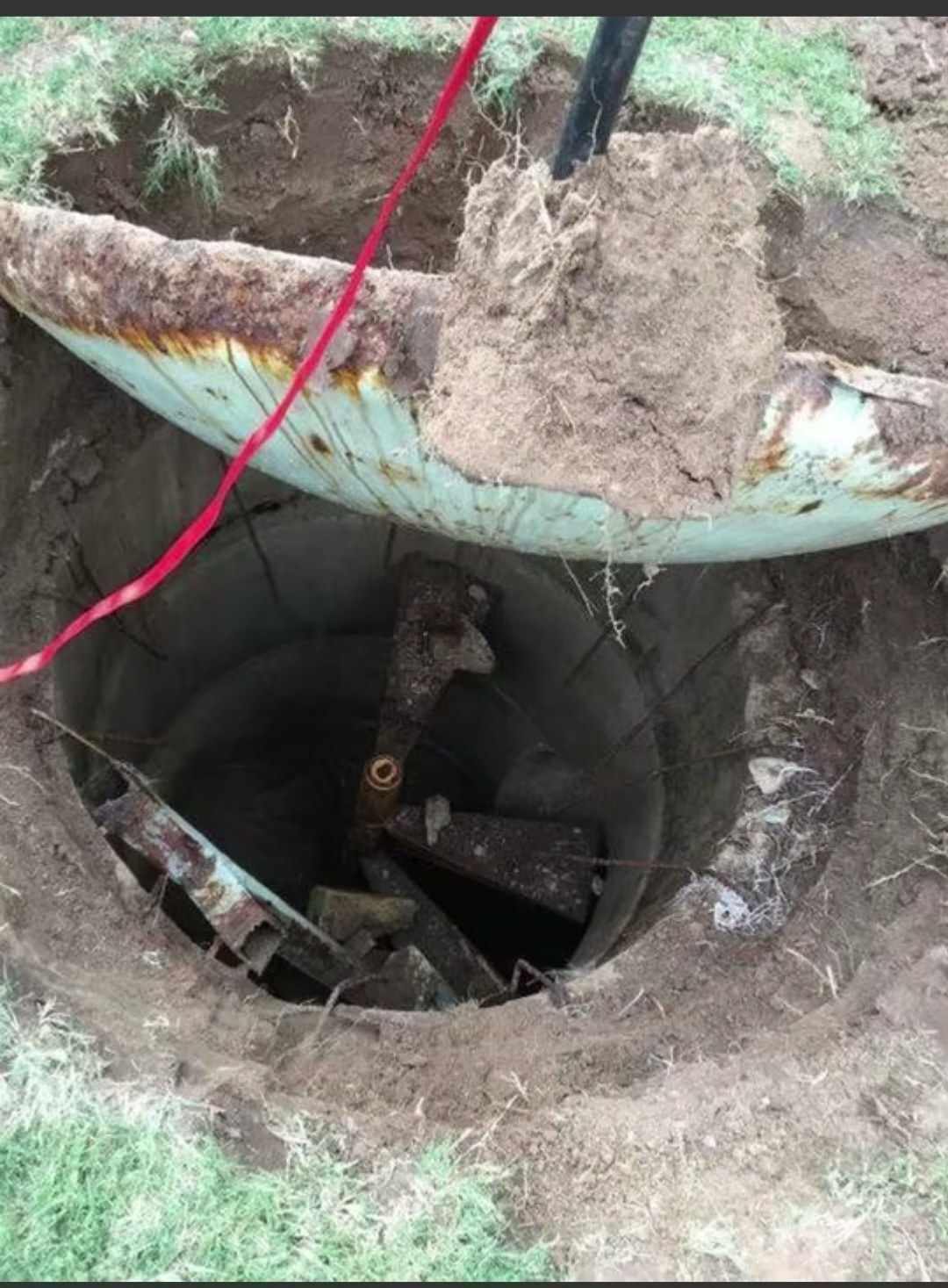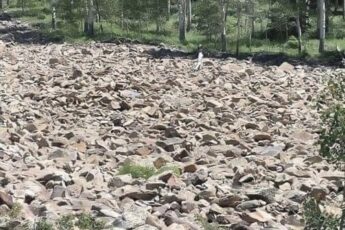When John Sims bought a friend’s house in Tucson, Arizona, he thought he was simply making a good investment and gaining a new home with character. The property seemed fairly ordinary from the outside, with a spacious yard and the charm you would expect from a mid-20th-century build. But soon after settling in, John began to hear a rumor that something unusual was buried beneath the ground. At first, he brushed it off as local gossip or an old neighborhood tale meant to spark curiosity. Yet the more he heard about it, the more intrigued he became.
His curiosity got the best of him, and he decided to dig deeper—both literally and figuratively. He began by looking through records, asking questions, and investigating the home’s history. That’s when he discovered that back in 1961, a company called Whitaker Pools had been involved in building a structure on the property. Now, most people would associate a pool company with, well, pools. But this was the era of the Cold War, a time when fears of nuclear conflict ran high, and it wasn’t entirely unheard of for pool companies to repurpose their skills into constructing bomb shelters.
The idea that his home could be sitting on top of a Cold War relic was too compelling to ignore. To confirm his suspicions, John decided to call in professionals. He hired metal detector experts to carefully scan the property. After some time and effort, their equipment finally pinged, pointing to something buried beneath the soil. Just three feet underground, they uncovered a heavy metal hatch. The discovery alone was electrifying. Imagine standing in your backyard, brushing away the dirt, and finding what looks like an entrance to a hidden world.
With a mix of excitement and caution, John began the process of uncovering what lay beneath. Opening the hatch, he and his team descended into the unknown. What they found astonished them all: a fully constructed Cold War-era nuclear bomb shelter, remarkably intact despite being hidden for decades. The structure was made of solid concrete, with enough space inside to serve as a refuge during what was once believed to be an inevitable nuclear strike.
John realized quickly that the shelter wasn’t just a hole in the ground or a makeshift bunker. This was a serious project built to last, a testament to the anxiety and determination of the early 1960s. At the height of the Cold War, when tensions between the United States and the Soviet Union were at their peak, many Americans feared that nuclear war could break out at any moment. Families across the country were encouraged to prepare for the worst, and some went so far as to build bomb shelters stocked with canned goods, water, and emergency supplies.
As John explored the space, he noticed details that brought that era to life. Though decades had passed, you could almost imagine a family huddled inside, waiting out the unthinkable. The shelter had clearly been constructed with survival in mind. With reinforced walls and the potential for ventilation, it was designed to withstand both shock and radiation. The sense of history was palpable.
Wanting to preserve and make use of his discovery, John decided to restore the shelter rather than leave it in disrepair. He worked on reinforcing the structure to ensure it was safe, adding lighting so the underground room no longer felt so foreboding. What had once been a relic of fear and uncertainty was slowly being transformed into something functional and fascinating. For John, it became more than just a curiosity—it was a piece of history sitting right beneath his feet.
The story quickly captured the imagination of others. Friends and neighbors who heard about the discovery were amazed. Many people in Tucson and beyond had heard about Cold War shelters, but few had ever actually seen one in person, let alone stumbled upon one hidden in their own backyard. For history enthusiasts, survivalists, or simply the curious, John’s find was like opening a time capsule.
Beyond its novelty, the shelter serves as a reminder of a very different mindset in American history. Today, we might view the Cold War era as a distant chapter in textbooks, but for families in the 1960s, the threat of nuclear war felt very real. Schools held “duck and cover” drills, public service announcements urged preparation, and companies like Whitaker Pools pivoted their businesses to meet the demand for private shelters. Finding one so well-preserved brings those fears and preparations back into sharp focus.
John has often remarked on how surreal the experience has been. When he bought the property, he never imagined he would also inherit a hidden underground bunker. Instead of being just another house in Tucson, his home now sits atop a historical landmark of sorts. The shelter, once built out of fear, has become a source of fascination and even pride. It’s a reminder of human ingenuity—how people adapt, prepare, and build in the face of uncertainty.
For John, it’s also a point of reflection. What was once a secret meant to shield a family from disaster now stands as a story to be shared. He has considered opening the shelter for educational purposes or simply preserving it as a conversation piece. After all, not everyone can say they own a house with its very own nuclear bunker beneath the backyard.
In the end, what started as a simple property purchase turned into an extraordinary discovery. From rumors and speculation to a metal hatch and a descent into history, John Sims uncovered something that connected him directly to one of the most tense and anxious periods in modern memory. His Cold War-era shelter is more than a hidden room underground—it’s a snapshot of a time when families lived under the looming shadow of nuclear conflict, and when preparation for the worst was part of everyday life.
What makes John’s story so compelling is that it reminds us of how history often lies just beneath the surface, waiting to be rediscovered. Sometimes, it takes a little curiosity and a willingness to dig deeper to reveal something extraordinary. In John’s case, that curiosity uncovered a Cold War relic that continues to amaze and inspire everyone who hears about it.






